Wool fabrics are designed to keep you warm. In terms of quality and luxuriousness, alpaca and Merino wool are two of the best. But if I had to decide between the two, I would want to know, “Is one of these types of wool better than the other?” So I’ve created this guide to help distinguish between the two.
Both alpaca and Merino wool are natural fabrics that come from animals. Alpaca wool comes from the alpaca coat, while Merino comes from the wool of merino sheep. Compared to other types of wool, both of these types of wool are more exotic and therefore more expensive.
In this article, we’ll compare alpaca and merino wool by examining certain characteristics that you would consider if you were deciding between them. We’ll also look at the pros and cons of each fabric type. Finally, we’ll determine which is the better choice. Continue reading to learn more.
Alpaca vs Merino Wool: Key Points
| Alpaca | Merino | |
|---|---|---|
| Texture | Soft, smooth fibers | Soft, but fibers can feel prickly |
| Warmth | Hollow fibers trap air, warmer than alpaca | Fibers have air pockets that trap warm air, warm but not as warm as alpaca |
| Durability | Very durable | Less durable than alpaca |
| Moisture Wicking | Water repellent, moisture wicking | Absorbs some moisture, can become saturated |
| Weight | Lightweight due to hollow fibers | Heavier than Merino wool |
| Hypoallergenic? | Yes | No, contains lanolin which could cause allergies and itching |
| Ease of Care | Hand-wash or dry clean, lay flat to dry, fold it instead of hanging it | Hand- or machine-wash, turn inside out, lay flat to dry, fold instead of hanging it |
| Cost | Expensive | Less expensive than alpaca |
| Uses | Sweaters, scarves, socks, hats, blankets | Sweaters, scarves, socks, hats, blankets |
What is Alpaca Fleece?
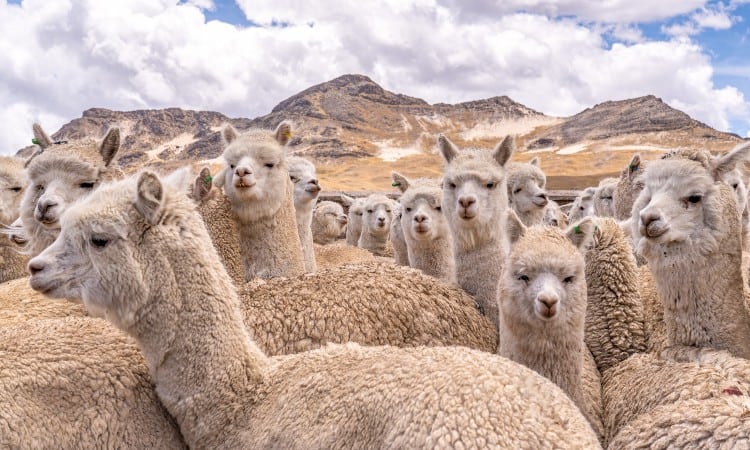
Alpacas are native to Peru and live high in the mountains. They are smaller cousins of the llama. Their fur ranges from white to black, with shades of brown in between, but it can also be dyed in other colors once harvested.
The two most common breeds of alpaca are Huacaya and Suri, and their fur is slightly different. The Huacaya alpaca has fur that is fuller and softer, while the Suri alpaca has silky and long fur.
Since they live so high in the mountains, where snow is common, alpaca fur is very warm. It is warmer than any other kind of wool fabric. It is also moisture-wicking and resists radiation from the sun. These qualities are what makes alpaca wool so sought after.
But alpacas only produce about 10 pounds of fibers each year, so it makes their fur a rarity. Fur from younger alpacas is even more sought after because it is thinner and softer.
Alpacas are sheared once a year as temperatures warm up. Shearing doesn’t hurt the alpaca; it’s good for them because it prevents their fur from getting matted and tangled. Once the fur is sheared, it is spun into yarn and sold to those who weave it into a fabric.
There are concerns about the ethical treatment of alpacas when it comes to harvesting their fur, but companies like Peruvian Connection help to ensure that alpaca fur is harvested humanely.
Peruvians have been shearing alpacas for centuries for the animal’s well-being, not to obtain their fur. Peruvian Connection helps ensure that the only alpaca fur that is sold was taken from animals who died of natural causes.
What is Merino Wool?
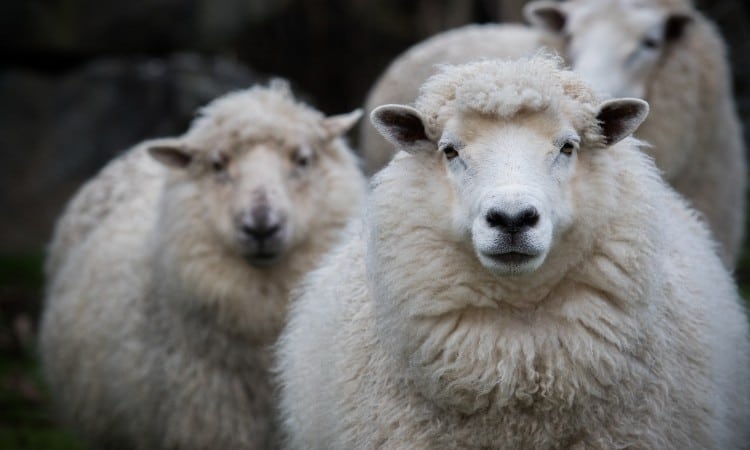
Merino wool is a type of fiber that comes exclusively from Merino sheep. Their fur is the most prized sheep wool in the world. Merino sheep have origins in the mountains of Africa but made their way to Spain. The Spanish people were the first to name the sheep’ Merino.’ Today Merino sheep are found primarily in Australia and New Zealand.
Merino sheep comprise over half of the sheep population in Australia and 10% of the sheep population in New Zealand. Australia and New Zealand are two of the world’s largest wool exporters, with Australia being first and New Zealand being third.
Merino sheep must also have their fur sheared once a year. It helps with their health and well-being. Otherwise, sheep could have many health issues if they aren’t sheared.
The wool itself is usually 2 to 4 inches long, and Merino sheep can produce anywhere between 13 and 40 pounds of wool per year. As with alpaca, Merino sheep wool is also turned into yarn after it is harvested. The yarn is then woven into fabric.
What’s the Difference Between Alpaca and Merino Wool?
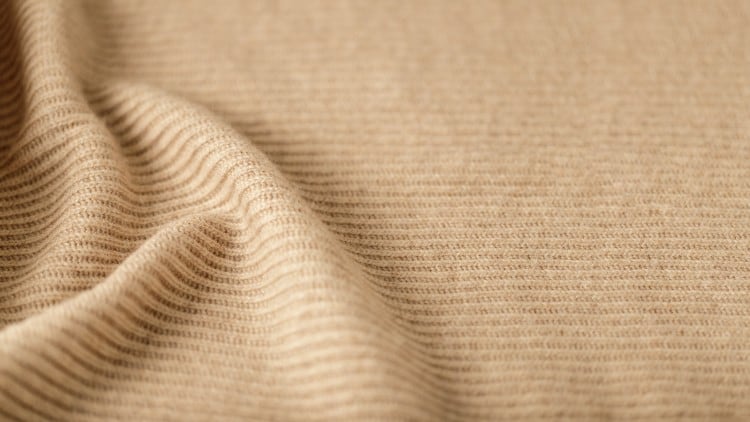
Texture
Alpaca fleece is one of the softest natural fibers in the world. There are different classifications of alpaca wool:
- Royal alpaca
- Superfine
- Fine
- Medium
- Strong
Fabric softness is determined by measuring the width of a single fiber in microns. Smaller microns mean softer fibers. Royal alpaca fibers are the softest and measure less than 18 microns. Strong alpaca fibers measure at least 30 microns, but they are still incredibly soft. (For comparison, a single human hair is typically 70-100 microns on average.)
There are 5 classifications of Merino wool as well:
- Ultrafine
- Superfine
- Fine
- Medium
- Strong
Ultrafine Merino wool has a measurement of less than 24 microns. It has a texture similar to that of cashmere and is even used to make some cashmere fabrics. Strong Merino wool measures 24 microns or greater.
But which type of fabric is softer? It turns out that alpaca fleece is softer than Merino. You may be wondering why this is the case. Since the micron measurements of Merino wool are smaller than those of alpaca, shouldn’t Merino be softer?
Microns aren’t the only factor in determining fabric softness. The texture of alpaca fibers is smooth and consistent, while Merino wool can sometimes feel prickly. Both fabrics are still incredibly soft, but alpaca is just a bit softer.
Warmth
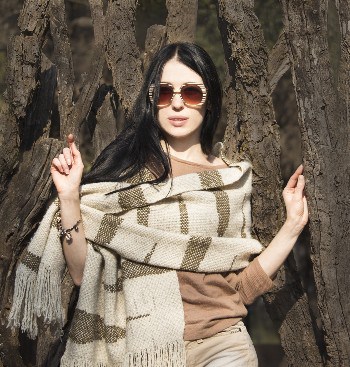 Both types of fibers are very warm and are two of the warmest fabrics you could buy. Considering that both animals live or originally lived in the mountains where it gets colder, they need to adapt their fur to help keep them warm.
Both types of fibers are very warm and are two of the warmest fabrics you could buy. Considering that both animals live or originally lived in the mountains where it gets colder, they need to adapt their fur to help keep them warm.
But there is a small difference between alpaca fibers and Merino fibers determining if one is slightly warmer than the other. Alpaca fibers are hollow on the inside, while Merino fibers have pockets that trap air inside.
Both types of fibers allow for warm air to fill them and get trapped inside. But since alpaca fibers are hollow, more warm air can get trapped. This creates more warmth. So in terms of which fabric is warmer, the answer is alpaca.
Durability
Alpaca and Merino wool are very strong and durable fibers. One fiber of Merino wool is slightly stronger than a single human hair, but one alpaca fiber is over twice as strong as Merino wool and 3 ½ times as strong as human hair.
This means that alpaca fibers have a higher tensile strength than Merino wool. They can be pulled and stretched farther than wool without breaking. But Merino wool is still very strong. It is great for making socks and beanies out of since they both need to stretch a little when you wear them.
Although alpaca is stronger and more durable, both fabrics will last for a long time as long as you care for them properly.
Moisture Wicking
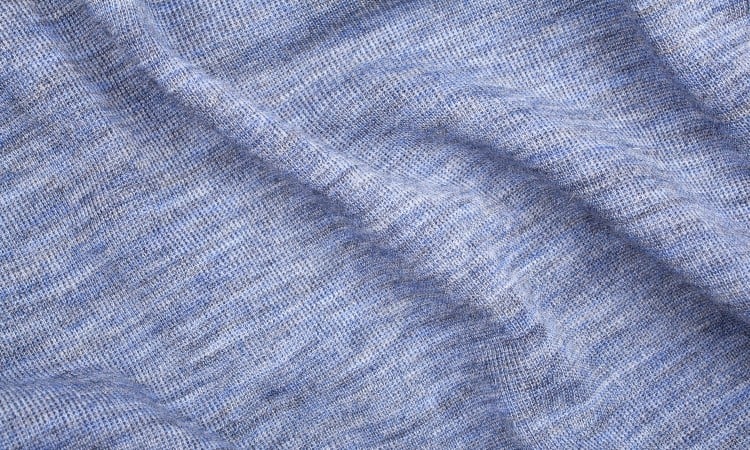
Sometimes wool fabrics can cause sweating, especially since they are designed to keep you warm. They are also typically worn during winter, when snow and cold rain are common. Any time you wear a fabric exposed to a lot of moisture, you want it to be as moisture-wicking as possible.
While neither of these fabrics is 100% waterproof, alpaca naturally repels water. It does a great job of wicking away moisture. A lot of alpaca wool’s moisture-wicking ability has to do with the fibers being hollow.
The first reason is that the warm air that gets trapped causes any moisture to evaporate quickly. The other reason is that since the fibers are hollow, water can’t saturate through them, so it has nowhere to go except to evaporate.
On the other hand, Merino wool absorbs some moisture. It isn’t as moisture wicking since the fibers aren’t completely hollow. Water is wicked away from the tiny pockets of air but could soak into other parts of the fiber. The warm air that gets trapped inside the fibers also helps to wick some moisture away.
Sheep wool tends to become saturated after a certain amount of moisture gets into the fabric. This can cause the fabric to become uncomfortable, and if sweat can’t escape easily, it could cause itching and possibly odors.
Alpaca is the better choice of the two fabrics since it is water repellant and can wick away moisture better than Merino wool.
Weight
Wool and fleece fabrics are typically used for outerwear and cold-weather activewear. If you were spending a lot of time outdoors in the winter, especially doing heavy activities, you would want a fabric that will keep you warm and lightweight.
Since alpaca fibers are hollow, they are very lightweight because they contain more air. Alpaca is a good choice for sweaters and coats that will be worn or carried during hiking, running, or working outside.
Merino wool is a bit heavier, so it may not be the best choice for wearing during heavy activities. Accessories like socks, hats, scarves, and gloves made from Merino wool are great options because they aren’t heavy. But sweaters and coats made from Merino wool may create more weight than what you want to wear or carry with you.
Hypoallergenic
Sometimes wool can cause some people to experience allergies and itching. This is due to wool having a type of wax called lanolin in it. All types of wool, including Merino, have lanolin in them. So, unfortunately, not all people can wear products that are made from it.
Alpaca wool does not contain lanolin and as a result, it is not known to cause itching. It is considered to be hypoallergenic. For people that experience itching when they wear wool, alpaca may be a better choice.
Ease of Care
Even though alpaca and Merino wool are strong and durable fabrics, special care is required to keep them that way. Since they are natural fabrics, they can stretch out or weaken over time or be damaged due to heat or excessive agitation.
To care for alpaca fabric, the preferred cleaning method is hand-washing it. This is because the hand-washing fabric is more gentle due to creating less agitation. You can also dry clean it if there is a stain that is difficult to remove. Here is the proper way to wash alpaca:
- Use warm water and a mild soap or detergent.
- Do not twist or wring excess water out of the fabric.
- Roll the fabric up in a towel and gently press the water out to allow the towel to soak it up.
- Let the fabric air dry. Using a dryer can damage the fabric.
- Do not hang it up because it can lose its shape; fold it instead.
With Merino wool, you can hand-wash it if you prefer. But the difference between Merino wool and alpaca is that you can also wash Merino wool in the washing machine. If you hand wash Merino wool, follow the same precautions listed above for hand-washing alpaca. But if you use the washing machine, there are a few extra precautions you should take:
- Wash it by itself
- Turn it inside out
- Use a detergent designed for wool
- Wash using a lower water temperature
- Don’t put it in the dryer; lay it flat
- Fold it when dry; don’t hang it
You should also avoid using fabric softener with both alpaca and Merino wool. Fabric softener creates a coating on the fibers that could affect the fabric’s ability to control moisture and keep you warm.
Cost
The downside to alpaca fleece is that it is expensive. It is one of the most expensive fabrics in the world. But since alpaca fibers are only harvested once a year, it makes sense why it is so expensive.
In terms of sheep wool, Merino is one of the best. That means it is also one of the most expensive. But Merino wool is still cheaper than alpaca because more sheep produce more wool than alpacas do.
Uses
Alpaca and Merino wool have similar uses. They are both cold-weather fabrics that are used for outerwear. Some of the most popular uses are for scarves, hats, and socks. But they can also be used for sweaters, coats, and blankets.
Pros and Cons of Alpaca
To sum everything up, there are many pros that alpaca fabrics offer. They are:
- Warm
- Hypoallergenic
- Moisture-wicking
- Soft
- Durable
- Lightweight
The downside to alpaca fleece is that it is one of the most expensive fabrics you can buy. It also requires more special care than fabrics that aren’t wool.
But overall, it’s easy to see why items made of alpaca fabric are so desirable. The wide range of natural colors means that the fabric doesn’t have to be dyed, although it can create new styles.
Pros and Cons of Merino Wool
Merino wool has many positive characteristics as well. It is cheaper than alpaca while still being soft and warm. It is also durable and can last a long time.
But when compared to alpaca fibers, Merino wool does have some cons. Some of the cons include:
- Absorbs moisture
- Can cause itching/allergies
- Not as lightweight
- Not as strong
Although there are more cons to Merino wool than alpaca compared to other sheep wools, there are very few cons and it’s hard to beat the quality that Merino wool offers.
Popular Products Made of Alpaca and Merino Wool
Alpaca Socks
 These alpaca socks are made from 100% alpaca wool and can be worn by men and women. They are perfect for cold winter days, especially those that are going to be spent outside.
These alpaca socks are made from 100% alpaca wool and can be worn by men and women. They are perfect for cold winter days, especially those that are going to be spent outside.
The socks come in two color choices: gray and brown, but for the price, you get a 4-pack. You can choose two sets of gray, two sets of brown, or one set of brown and one set of gray. The socks are even machine washable, which makes caring for them extremely easy.
Merino Wool Beanie
 This 100% merino wool beanie will help keep your head and ears warm when it’s cold outside. It’s especially great for working outdoors because it is comfortable, breathable, and warm. It even has a UPF rating of 50+.
This 100% merino wool beanie will help keep your head and ears warm when it’s cold outside. It’s especially great for working outdoors because it is comfortable, breathable, and warm. It even has a UPF rating of 50+.
This beanie comes in 18 colors, so there’s a color to fit every style and personality. It is also one-size-fits-most. It is machine washable as well and can be dried in the dryer using low heat.
Which is the Better Choice?
Based on the qualities of each type of fabric, alpaca is the better choice if you’re having a hard time deciding between the two. If you can afford the expense of alpaca fabric, there aren’t many fabrics that can top it.
But just because alpaca is a better fabric choice than Merino wool, it doesn’t mean that Merino is a bad fabric. It is a great choice if you want similar qualities to alpaca for a less high price.
Conclusion
I hope this article helped distinguish between alpaca and Merino wool. Both are great fabrics that will keep you warm. Alpaca is the better overall choice, but it is expensive, so you can get a similar fabric in Merino wool if you want to save a little money. If you enjoyed what you learned, share it with others and leave a comment. Thanks for reading!